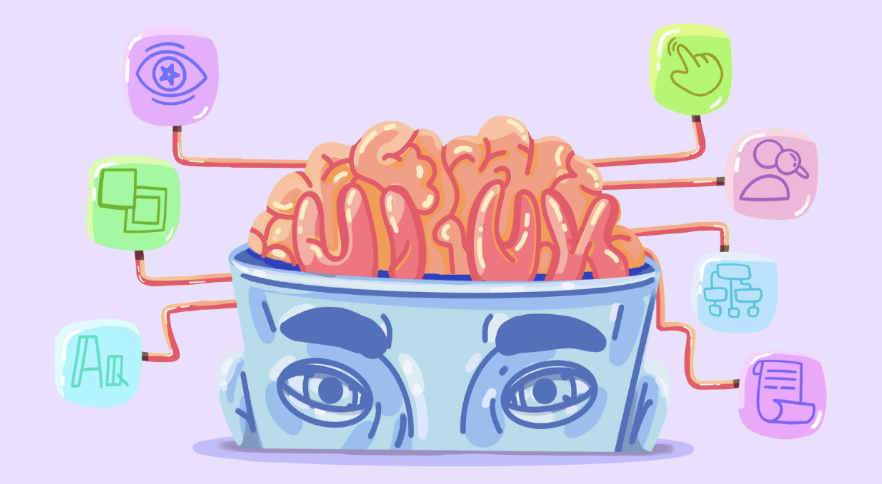
Analytica House
Feb 10, 2023UX Laws and UX Analysis in Light of Neuroscience - AnalyticaHouse

Your brand and its website being discovered, and measuring your users’ thoughts and emotional responses on the path to conversion, is vital for analyzing your customers’ journey.
Whenever your users interact with your brand’s website—regardless of platform (app or web)—the sum of their experiences is called user experience, or UX. Many factors influence user experience. In this article, we’ll show you how to identify those factors through UX laws designed with neuroscience in mind, and how to conduct a UX analysis to derive actionable insights.
What Is Neuroscience?
Neuroscience is an interdisciplinary field that studies the nervous system. It aims to expand our understanding of the brain and nervous system.
By combining physiology, anatomy, mathematics, developmental biology, and psychology, neuroscientists work to explain learning, memory, behavior, perception, and consciousness. Researchers in this field study brain functions, neuronal behavior, and how neurological foundations underlie various diseases.
As the most complex organ in our body, the brain regulates everything that keeps us alive—from emotions, thoughts, and memory to breathing, touch, motor functions, vision, and hunger. Neuroscience techniques have evolved from molecular and cellular studies of neurons to imaging sensory, motor, and cognitive functions in the brain.
UX Laws Through the Lens of Neuroscience
Cognitive and psychological factors most strongly shape user experience. UX laws describe general principles for designing and using interactive systems like websites and mobile apps.
Designs must anticipate how users perceive their surroundings, empathize with them, and guide them swiftly toward their goals. In short, UX design grounded in neuroscience is essential. If a design hasn’t followed these principles, analysts should use neuroscience-based UX laws to assess and improve the site to align with best practices.
Every user interacting with your site is subject to basic psychological principles. A user-centric design that delivers great experiences requires understanding human psychology and applying established laws—developed not only by UX experts like Don Norman and Jakob Nielsen but also by psychologists like Bluma Zeigarnik, who studied human behavior extensively.
Neuroscience-Based UX Laws
To enhance user experience and make your site more pleasant and efficient, apply these neuroscience-informed UX laws when conducting your analysis:
Aesthetic-Usability Effect
Users often perceive visually appealing designs as more usable. Attractive aesthetics trigger positive brain responses, making users believe the design works better. As a result, aesthetic designs mask usability issues by making users more tolerant of minor flaws.

Jakob’s Law
"Users expect your site or product to follow familiar interaction patterns."
Jakob Nielsen’s principle emphasizes leveraging users’ existing mental models rather than reinventing the wheel. Meeting established expectations ensures a smoother experience. For example, e-commerce sites use a shopping cart icon—deviating from such conventions hurts UX.

Hick’s Law
The time to make a decision increases with the number and complexity of choices.
Hick and Hyman found that decision time grows logarithmically with the number of options. To reduce cognitive load, limit choices, break complex tasks into smaller steps, highlight recommended options, and introduce features gradually for new users.

For instance, Ipekyol’s product listing shows 2–4 items at a time to make decisions easier:


Miller’s Law
Our working memory can hold only about 7 (±2) items at once.
If overwhelmed, the brain struggles. Grouping information into chunks eases processing. Netflix’s menu uses clear category headings, aligning with Miller’s Law:

Gestalt Principles
Humans will interpret complex visuals in the simplest way possible with minimal cognitive effort.
Gestalt laws explain how we group elements by similarity, proximity, continuity, and closure. Visually link related items with color, lines, or frames, but avoid over-cluttering, which can be mistaken for ads.

Von Restorff Effect
Distinctive items stand out and are more memorable.
To highlight critical information or actions, use isolation carefully—don’t overuse contrast, and combine color with motion to ensure accessibility.

Peak-End Rule
People judge experiences largely by how they felt at the highest point and at the end.
Kahneman et al.’s classic study shows that adding a more pleasant ending makes people prefer longer, not shorter, experiences. In UX, focus on peak moments and the final interaction to leave a positive lasting impression.

Zeigarnik Effect
Unfinished tasks are better remembered than completed ones.
To motivate users, show clear progress indicators. For example, Duolingo’s onboarding uses a progress bar to leverage the Zeigarnik Effect:

By applying these neuroscience-based laws, you can design experiences that are both enjoyable and conversion-friendly. As Jakob Nielsen said, you don’t need to reinvent the wheel—just refine it.
More resources

5 Ways to Accurately Measure Sales Impact with Google MMM
Google MMM (Marketing Mix Modeling) is one of the most powerful statistical methods for understandin...

ChatGPT Shopping Research: An AI-Powered Shopping Assistant
ChatGPT Shopping Research is an AI-powered shopping assistant that accelerates users' shopping resea...

Data-Driven Tactics to Build Customer Loyalty After Black Friday
Customer loyalty is the most valuable outcome of the Black Friday period, as short-term traffic and...

